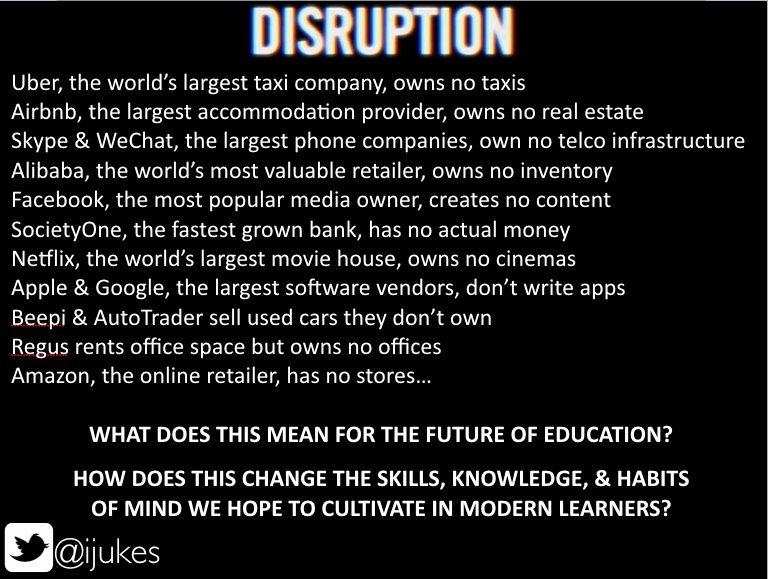Anyway, he was correct about Chula Vista. While the structure of the visit was similar (student tour - with just me), free-ranging (maybe better than Point Loma because their three schools were spread across several suburban blocks whereas Chula Vista, like us, is one building), lunch with 2 teachers (this time a neat conversation with both parties contributing) and a fruitful meeting with Lisa a senior leader the vibe of the place was warm and inviting.
My day started with sophmore (Year 10 - our Year 11) student, Iza, taking me throughout the school which is located on the edger of the desert.
Grade Structure
- 4 grade levels
- 3 teams per grade
- 2 classes per team
- Like Point Loma each grade level took set classes
- Iza liked this because it allowed teachers to collaborate with their projects
- Project Based Learning
- Loosely defined by Stanford Model (Empathise, Ideate, etc) but a project could include anything that looks like an inquiry and does not follow any set process
- Usually teacher comes up with project idea (has been pitched to colleagues [other teachers in the team] and critiqued and strengthened)
- sometimes student feedback/input sought into project ideas
- Project is usually across 2 subjects eg:
- Engineering/Humanities
- design and build a haunted house/creative writing of horror stories
- Chemistry/Humanities
- study of sustainable, alternative energy culminating in a debate
- Biology/Humanities (in this case the Biology teacher was an artist)
- study of anatomy included a piece of visual art accompanied by a spoken word piece
- Maths/Business
- Shark Tank - pitch a business and run it
- Projects mostly result in a product (see above) and also included:
- Particle Petting Zoo
- Political Cartoons
- Steam Punk
- Seniors (Final Year) could do a Senior Project on anything they liked (required teacher sign off) as long as it had a community aspect.
- Electives
- 1 per trimester
- multi-grade level
- some student-led eg
 |
| Iza with some work from the Ethnic Studies elective she runs with another student (she will run this each semester for her reamining years at school) |
- anything a teacher wishes to offer eg Peace Leadership League. They started by producing an impressive mural for front of school after a student died to show how bad can become good (this student had found solace in music)
Internships
- Carried out in Junior Year (our Year 12)
- last 4 weeks of the year
- pupils spend year planning and selecting
- often careers based
- driven by concept of "leave something behind" eg
- David, who was a Biology enthusiast, secured a placement at National History Museum. He will leave a presentation on what he learned by being involved in the Museum
Goal Setting
- Not sure how this occured but I assume it happened in Advisories (see below) but liked some of the evidence I saw
Advisories
- 30 minutes per day
- separate grade levels
- No curriculum but most seemed to follow a pattern of:
- Monday Management (administration)
- Tuesday Talk (current issues)
- Wednesday Worries (Ups and Downs)
- Thursday ???? (something to do with tracking grades)
- Friday Free Time (kick a ball, share favourite Youtube channels)
- love school
- love hands-on projects
- love lack of textbooks and little homework
- some anxiety about are we being prepared for the demands of university (but they know they are)
- Ëvery one teaches like an art teacher"
- Everything gets messy a lot of the time but we just keep talking
- "less control but more windows"= less rules etc but lots of visibility and lots of talk and noticing
- a maths issue
- a sizeable % do remedial maths at university so now finishing year with lots of revision and uni prep. This is an issue Maths is aware of but still committed to PBL notion
- student work on display everywhere - largely project outcomes and reflections eg
What did I take away?
- learning connected across a high-interest project, with hands-on opportunities, and a genuine outcome engages students and leads to great learning
- 95%+ college placement
- this model works across the demographics
- 50% students get free lunch
- it's ok when things get messy (this is a reminder to myself) as long as all parties keep talking
- learning in the real world makesit real (lots of expert speakers come in to take classes, exhibitions happen, when possible, in communty [art galleries, parks etc].
- get more student up (like what we do with the elements of the Learning Design Model)
- even more convinced of the Learning Design Model we use
- our use of student voice to help determine contexts is something special

















































